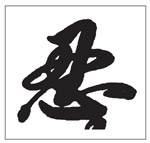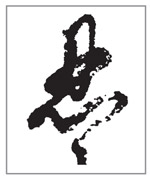In Search of the Niinja (12 page)
Read In Search of the Niinja Online
Authors: Antony Cummins

The term ‘
shinobi-gashira
[including] ten men’ can be seen in the bottom left of this image.
This truly scotches the myth of the samurai versus ninja and defines the ninja as actual samurai, who were well established within the ranks of standard armies.
Ideogram:
Onyomi
reading:
Tekinin
Kunyomi
reading:
Teki no shinobi
The simple concept of a ninja who serves a lord that is in opposition to ‘your’ lord and thus is considered the enemy.
Ideogram:
Onyomi
reading:
Ninka
Kunyomi
reading:
Shinobi uta
These are in the form of Japanese
Tanka
poetry and are centred on themes that relate to ninja activity with the aim of disseminating knowledge to future generations.
Ideogram:
Onyomi
reading: None
Kunyomi
reading:
Shinobi yakigusuri
A form of gunpowder used by the ninja in some of their tools.
Ideogram:
Onyomi
reading: None
Kunyomi
reading:
Shinobi
taimatsu
A torch specifically used by the ninja or used for shinobi activity.
All of the above were found in relation to ninja activity within their grammatical placement and thus are known to refer to ninja. Having now established that more often than not the ideogram for ‘
nin
’ is used without reference to ninja and that each example has to be checked for its own context, we will move on to show the various slight variations in the form of the ideogram itself.

The ideogram is of course of Chinese origin and means ‘perseverance’ or to ‘steal in’, and was established long before the shinobi of Japan came to be. Japanese text can be divided into
block
and
cursive
style, the former being a clear image and the latter being generally a form of connected or ‘sloppy’ writing. Examples found in Japanese literature:
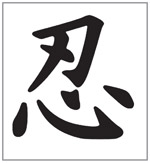
The standard ideogram for ‘
nin
’.
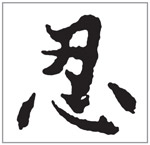
The ideogram ‘
nin
’ from the
Shinobi Hiden
(1560), transcribed in 1733.
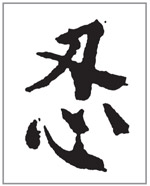
The ideogram for ‘
nin
’ from the
Shoninki
of 1681, transcribed in the mid 1700s.
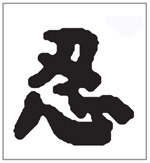
The ideogram for ‘
nin
’ from the
Otsubohon
school of horse riding, Edo Period.
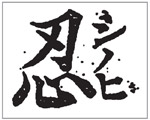
The ideogram for ‘
nin
’ from the
Kusunoki Masashige
Ikkan no Sho
manual of the Edo Period, accompanied by the phonetic spelling of ‘
shinobi
’.
The following two examples come from the Edo period, however, both are in reference to the name of Oshi Castle and have no connection to the ninja, they simply spell out a name, which is a fine example of how the ideogram for shinobi is found with zero connection to the ninja and an example of how the pronunciation can be totally different. They are examples of
Sosho
, or cursive style writing and are difficult for most readers of Japanese.
